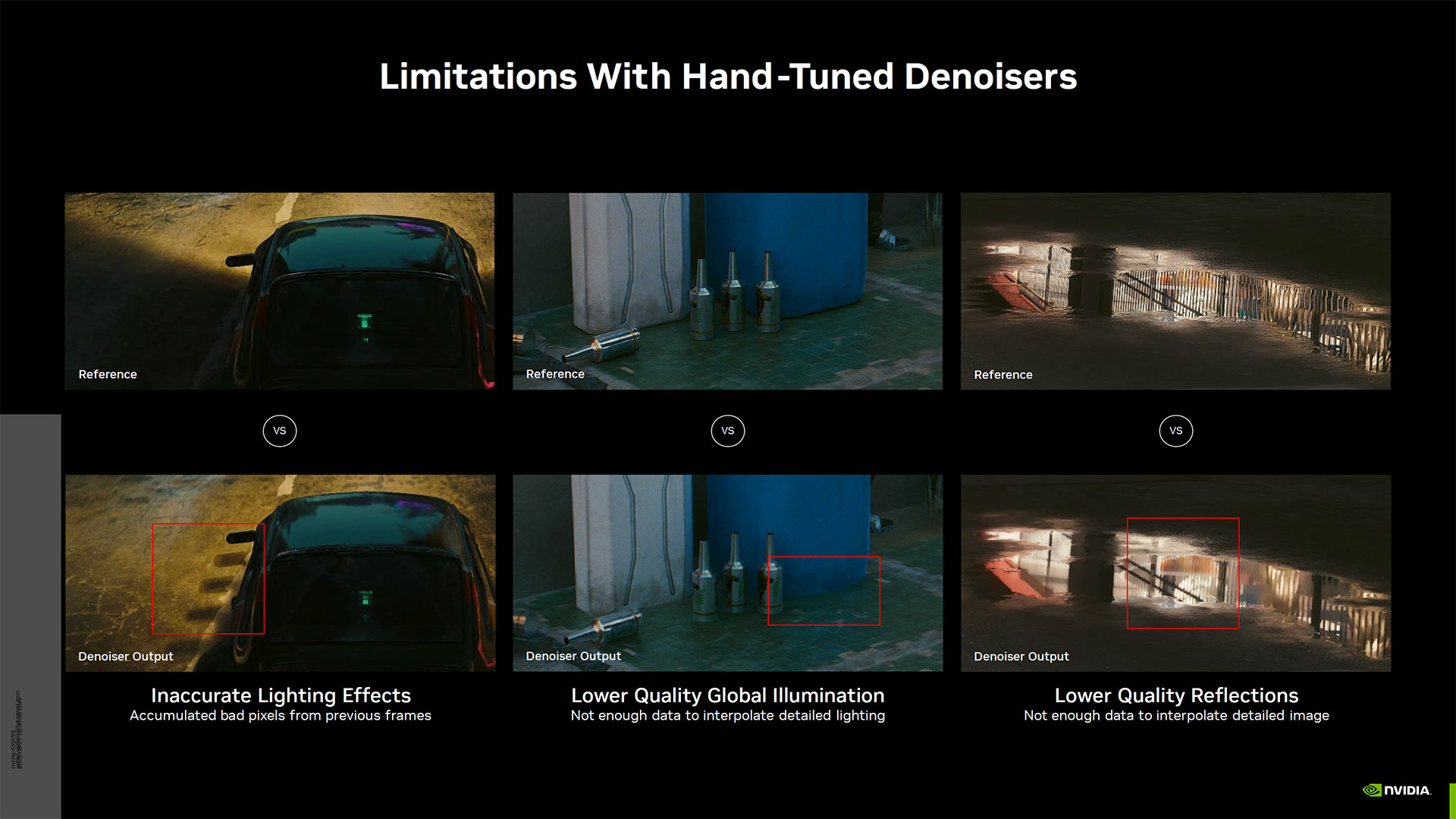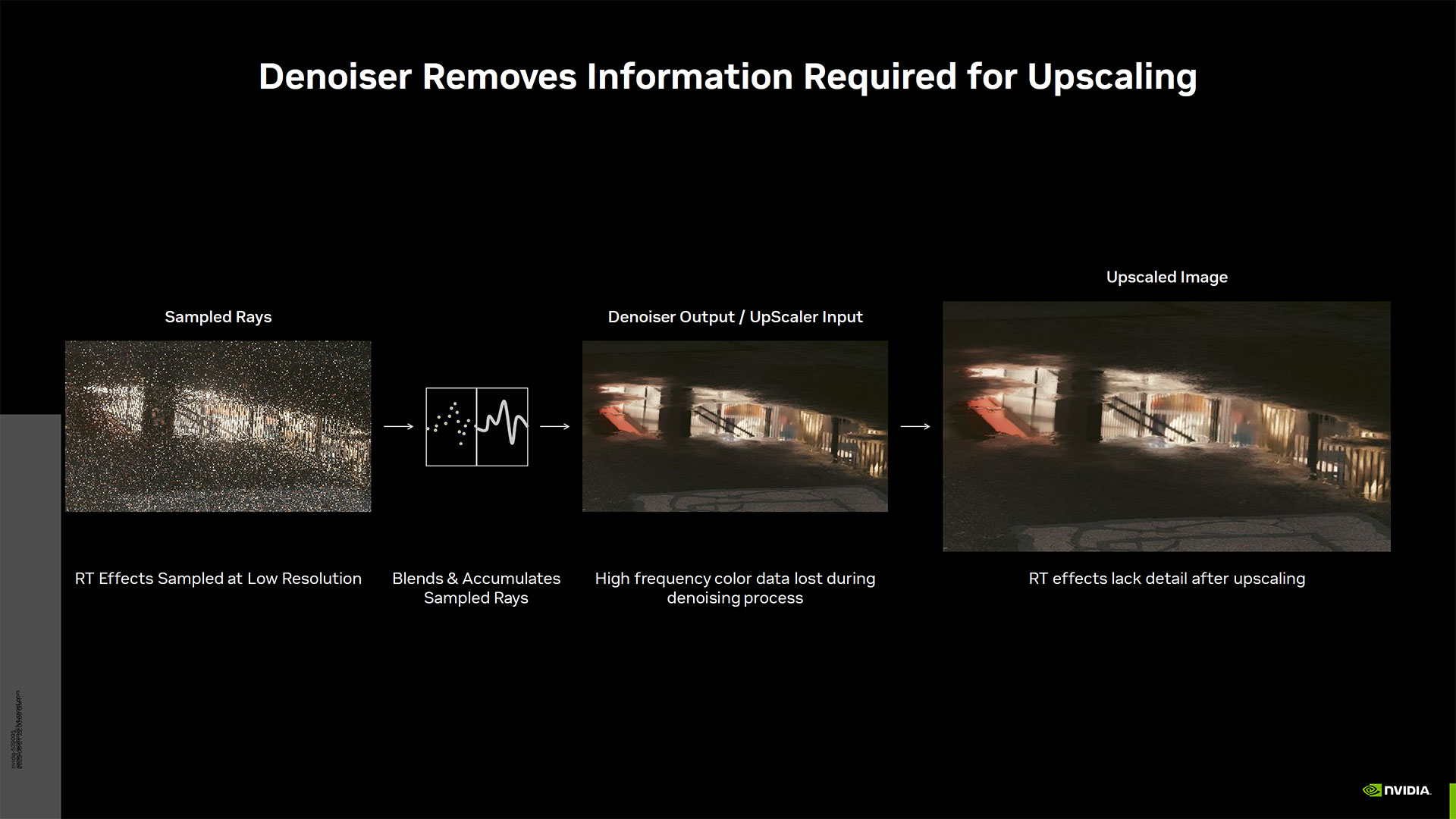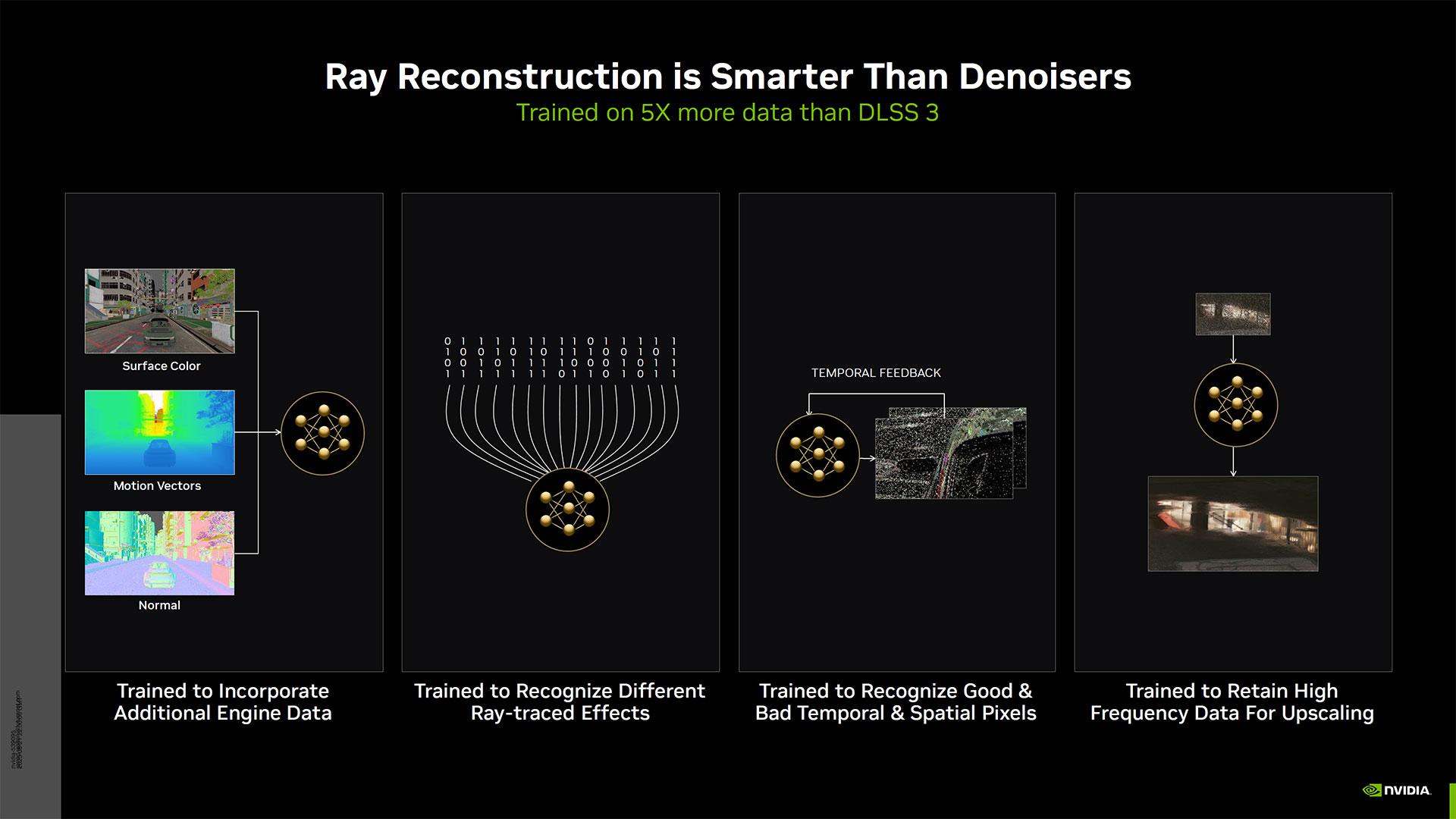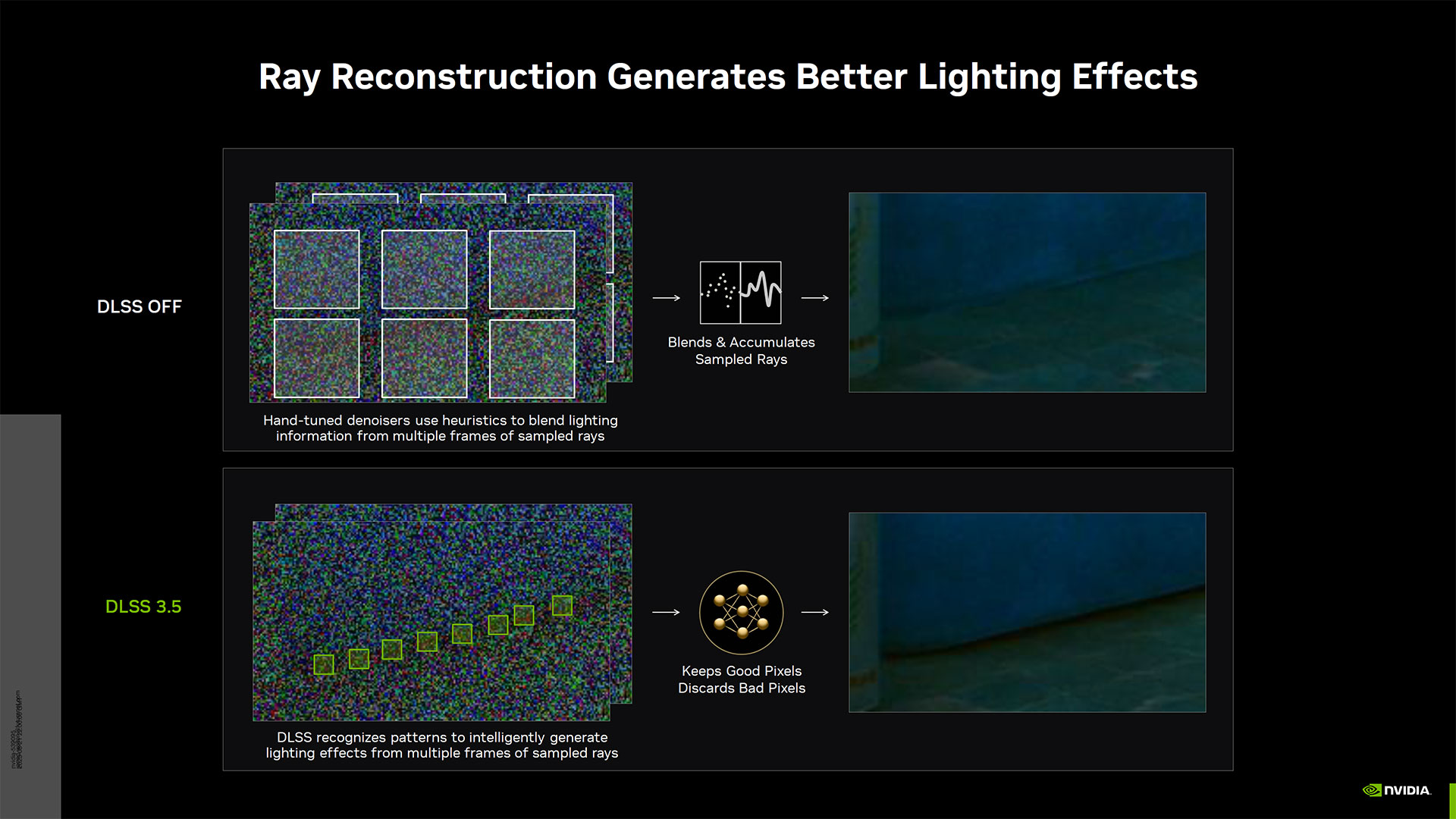An awful lot of traditional rasterization is just kind of hacked together and has both good and bad. I'm sure there will be limitations and flaws with using AI approximations as well, but there may also be some things that are better.
This new AI hotness combined with Nvidia's current market dominance could lead to a rise of a new wave of gameworks.
Imagine smoky bullets in the wind with mixed lighting, using moving smoke for cover in stealth, highly interactive and destructible environments, cheap and good hair, etc. If they are made with the assistance of the AI available in the Nvidia cards that make up most of the market they will be popular if they look good, the userbase will be large enough for many devs to put them in and will also be an Nvidia exclusive.
I'm not saying that is entirely good or bad, but if I see new effects I like, I'd rather enjoy them than protest.





